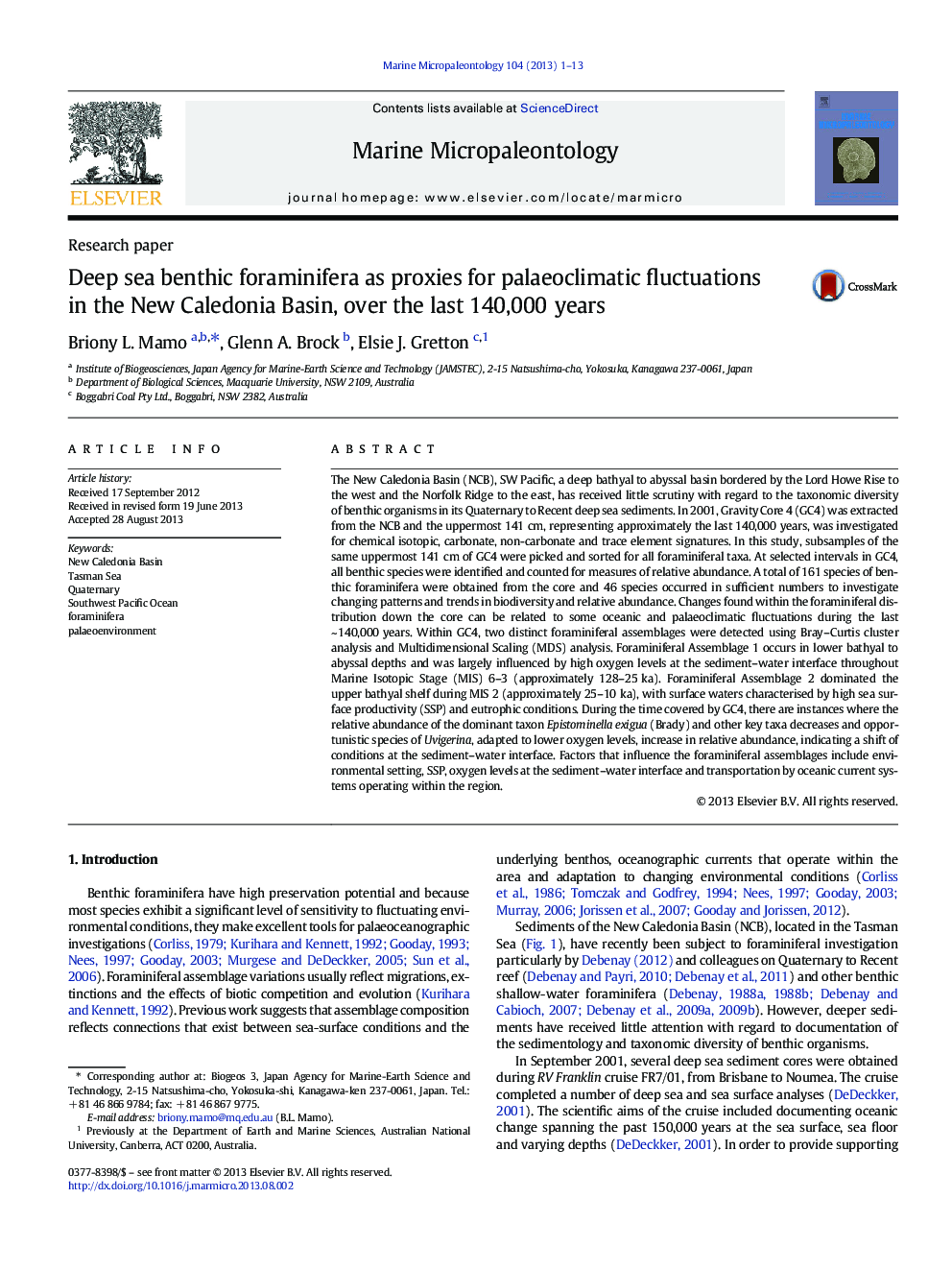| کد مقاله | کد نشریه | سال انتشار | مقاله انگلیسی | نسخه تمام متن |
|---|---|---|---|---|
| 4748874 | 1642181 | 2013 | 13 صفحه PDF | دانلود رایگان |
• Foraminifera were investigated from New Caledonia Basin core dating back ~ 140 kyr.
• 161 species were identified, 46 found in abundances reflecting biodiversity trends.
• 2 distinct foraminiferal assemblages were identified using Bray–Curtis analyses.
• Assemblage composition change was related to broad oceanic/climate fluctuations.
The New Caledonia Basin (NCB), SW Pacific, a deep bathyal to abyssal basin bordered by the Lord Howe Rise to the west and the Norfolk Ridge to the east, has received little scrutiny with regard to the taxonomic diversity of benthic organisms in its Quaternary to Recent deep sea sediments. In 2001, Gravity Core 4 (GC4) was extracted from the NCB and the uppermost 141 cm, representing approximately the last 140,000 years, was investigated for chemical isotopic, carbonate, non-carbonate and trace element signatures. In this study, subsamples of the same uppermost 141 cm of GC4 were picked and sorted for all foraminiferal taxa. At selected intervals in GC4, all benthic species were identified and counted for measures of relative abundance. A total of 161 species of benthic foraminifera were obtained from the core and 46 species occurred in sufficient numbers to investigate changing patterns and trends in biodiversity and relative abundance. Changes found within the foraminiferal distribution down the core can be related to some oceanic and palaeoclimatic fluctuations during the last ~ 140,000 years. Within GC4, two distinct foraminiferal assemblages were detected using Bray–Curtis cluster analysis and Multidimensional Scaling (MDS) analysis. Foraminiferal Assemblage 1 occurs in lower bathyal to abyssal depths and was largely influenced by high oxygen levels at the sediment–water interface throughout Marine Isotopic Stage (MIS) 6–3 (approximately 128–25 ka). Foraminiferal Assemblage 2 dominated the upper bathyal shelf during MIS 2 (approximately 25–10 ka), with surface waters characterised by high sea surface productivity (SSP) and eutrophic conditions. During the time covered by GC4, there are instances where the relative abundance of the dominant taxon Epistominella exigua (Brady) and other key taxa decreases and opportunistic species of Uvigerina, adapted to lower oxygen levels, increase in relative abundance, indicating a shift of conditions at the sediment–water interface. Factors that influence the foraminiferal assemblages include environmental setting, SSP, oxygen levels at the sediment–water interface and transportation by oceanic current systems operating within the region.
Journal: Marine Micropaleontology - Volume 104, October 2013, Pages 1–13
